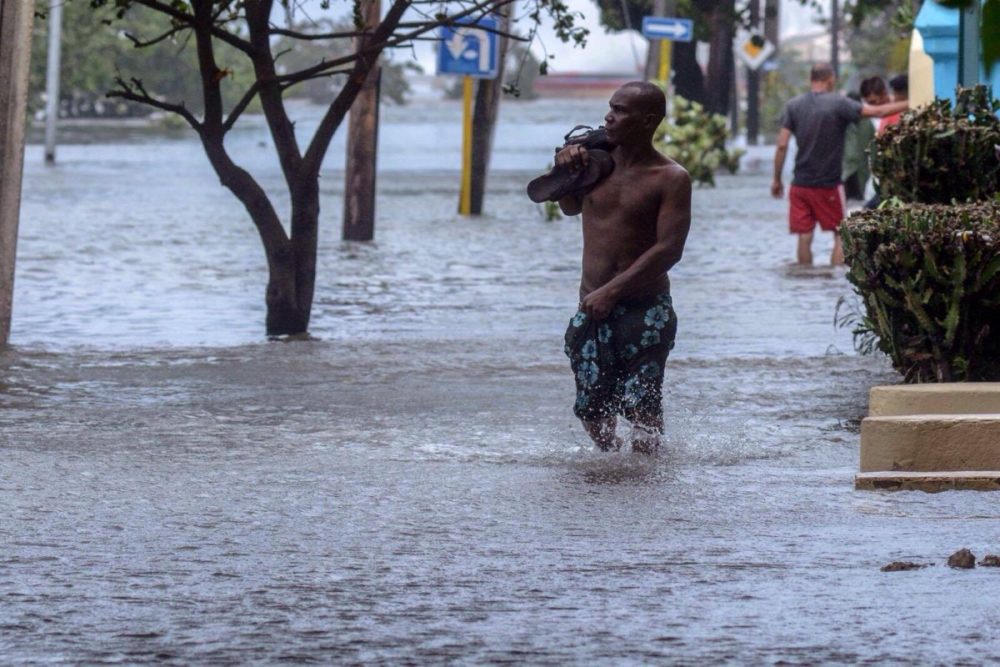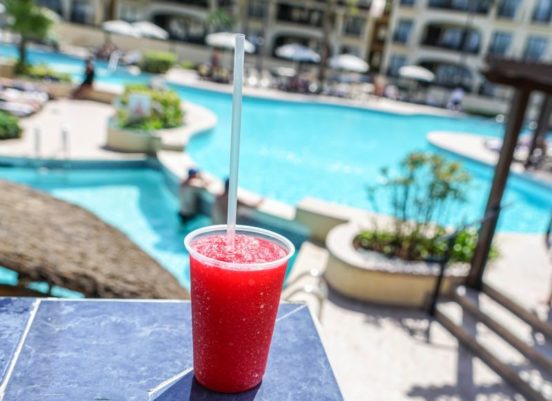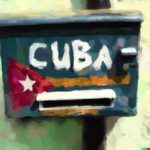Letztes Update: 24. May 2021
When you should go to Cuba – and when not!

Well, “the best time to travel”, “the most beautiful” or “the best climate” is of course relative, but there are universally liked conditions: a mild warmth, not too much humidity and rain, no hurricane season and low temperatures where you live. You can escape and get all these things by travelling to Cuba. In general, one can say:
Climatically, the months December to April are the best time to travel for us Europeans or Northern Americans. Mild temperatures and moderate humidity make life in Cuba pleasant. There are no hurricanes and moderate rain will spare us from surprises.
But let’s first come to the basic climate data. We have prepared a nice table, so that you can see at a glance what the day and night temperatures are, how many hours of sunshine per day, and how much rain you can expect in Cuba.
The climate table for Cuba
Climate table: When is the best time to travel to Cuba?
Temperatures and humidity
Cuba is of course Caribbean warm, it is not Germany or Canada 😉 The climatic average of daytime temperatures is between 30 and 32 degrees in the rainy season (the summer) and between 26 and 28 degrees in the dry season (the Cuban winter).

Now the temperatures in summer are generally too high or uncomfortable for us. While the winter in Cuba, the temperatures are what we always want to have in Germany e.g., between 26 – 29 degrees – and which we also have here for exactly 3 days a year 😉 In Cuba, they have these temperatures for 5 months! In addition, during the dry season, the humidity is relatively lower, so for me, it’s the best time to travel.
So if you have problems with too much humidity, you should consider whether Cuba is the right destination for you. My father, for example, is over 80 years old was quite challenged during the day with the the humidity. While my mother can cope very well with the hot, humid weather, which also made her back pain disappear! So in short: if you want and can do the tropics, Cuba is the right place!
Sunny days, rainy days
Cuba has 200 days of sunshine, that’s 180 more days than Central Europe, it at least feels like that 😉 So the probability is very high that you can get some sun in Cuba. Even the rainy season in summer is not really rainy. There will be a short, heavy thunderstorm, which can last between a few minutes to a few hours. But after the short storm, it disappears again and lets the sun back at the helm, most of the time anyway.

However, anyone who moves then has lost. The sultriness is overwhelming and the clothes stick to the body. So, unlike in Europe, the rain does not bring refreshment.
But that also means that even if you get wet, you will not freeze. If you are cold anyway, there is a Roncito (=a shot of Rum) or a cocktail at every corner to warm you up again.
When it gets cold in Cuba

The lowest temperature ever measured in Cuba was 0.6 degrees plus. There has never been any minus temperatures and rarely any snow, even in the high Sierra Maestra (1,974 meters highest) there is no snow. But one should not underestimate how cold it can get in winter. Temperatures at night sometimes drop – but only for a few days. It can get to 10 degrees in Havana and other tourist cities. This also means that there is no heating, and you should plan for the Cuban winter and take a light jacket with you.
Well, you will always fly with a jacket in the winter (how else would you get to the airport?), so I’m sure that even in the “cold” Cuban winter you will have something warm to wear.
The best time to travel: What the Cubans say
Well, I have a little anecdote for you: once when I was in Cuba in the winter and the weatherman in the news said that temperatures are going down to 27 degrees and it will be “un poco fresco”, it would be “a little fresh”! That’s when I laughed out loud 😉
By the way, this is also the time when the Cubans show off their winter clothes. Whether high boots and hats are necessary at 27 degrees remains unclear to me…
The best time to travel for the Cubans is therefore not their winter, but the beginning of summer, from April to June, before it gets too hot and humid.
And when it gets hot…

The months with the hottest climate are July and August, with average daily temperatures of 32 degrees. So you’ll sweat, even if you don’t move at all because of the extremely high humidity. By the way, the temperature in Cuba normally never rises above 34 to 35 degrees, so there is no comparison to the Emirates, for example, where you don’t dare to step outside the hotel door – although the climate also gets hotter due to the climate change.
Regional differences
Basically it can be said that in the eastern part of the island it is a little warmer and more humid. There are only small climatic differences such as deviations of only one degree. So whether you stay in the east or west, it is always nice and warm, and you don’t have to freeze.
Hurricanes in Cuba

The only real important regional factor is that in the east of the island the probability of getting hit by a hurricane is higher. Havana and the west are usually spared the worst effects, while the east has to suffer more. The hurricanes first hit the Lesser Antilles, then move to the east of Cuba before turning north or weakening. Of course, this is not always the case, as Hurricane Irma has also shown, but a pattern does exist.
The hurricane season is from July to October, so you may have problems with a hurricane and will have to change your plans. However, I was in Cuba at least 10 times during the hurricane season, and only once, with Irma, it was problematic. In the end, everything worked out. Only the restaurants were affected as there was a little less food, e.g. no eggs – the chickens were all evacuated or dead.
So the probability of really having problems with a hurricane is relatively low. The probability of being affected by an air traffic controller strike is certainly higher 😉
Hurricanes should, therefore, have no influence on your travel time.
Light and brightness

Especially in the winter, it is not to be underestimated that Cuba is closer to the equator. It gets darker in Cuba more evenly throughout the year. While we have longer days in Europe during the summer, we gain brighter hours in Cuba in winter. So in the Cuban winter, we can not only get warmth but also light, depending on the month, 2-3 hours more per day! That, in my experience, gives you energy to survive the last months of winter once you are back.
Travel expenses
Now, of course, there are some months that are more expensive than others. In the dry season, our winter, travel to Cuba is typically more expensive, because simply more people travel to Cuba during this time. But there also are other factors: classical holiday times are more expensive, i.e. Easter as well as the holiday season. The big exception: the flight on December 31st is always quite cheap – and don’t worry, you won’t be shot down by fireworks, Cubans don’t celebrate New Year’s Eve like that 😉
Conclusion: The best travel time from my point of view
If I get to choose, I’ll go to Cuba in February. The never ending winter doesn’t stop and will still stretch until May. So, February for me definitely is the best travel time, because I can recharge my batteries, to be fit to 3 more months of winter in Germany. After 2 weeks of warmth and brightness, I definitely can stem the last winter weeks.
And: of course “the best time to travel” does not exist in such a clear-cut way. If I am able to fly to Cuba, then I fly – no matter what the weather is like there. But if you have to choose, I hope that I made your planning easier.
If in doubt, take a look at the climate table (see above), because there you will surely find some suggestions!
Have fun planning your holiday!
Saludos,
Dietmar











